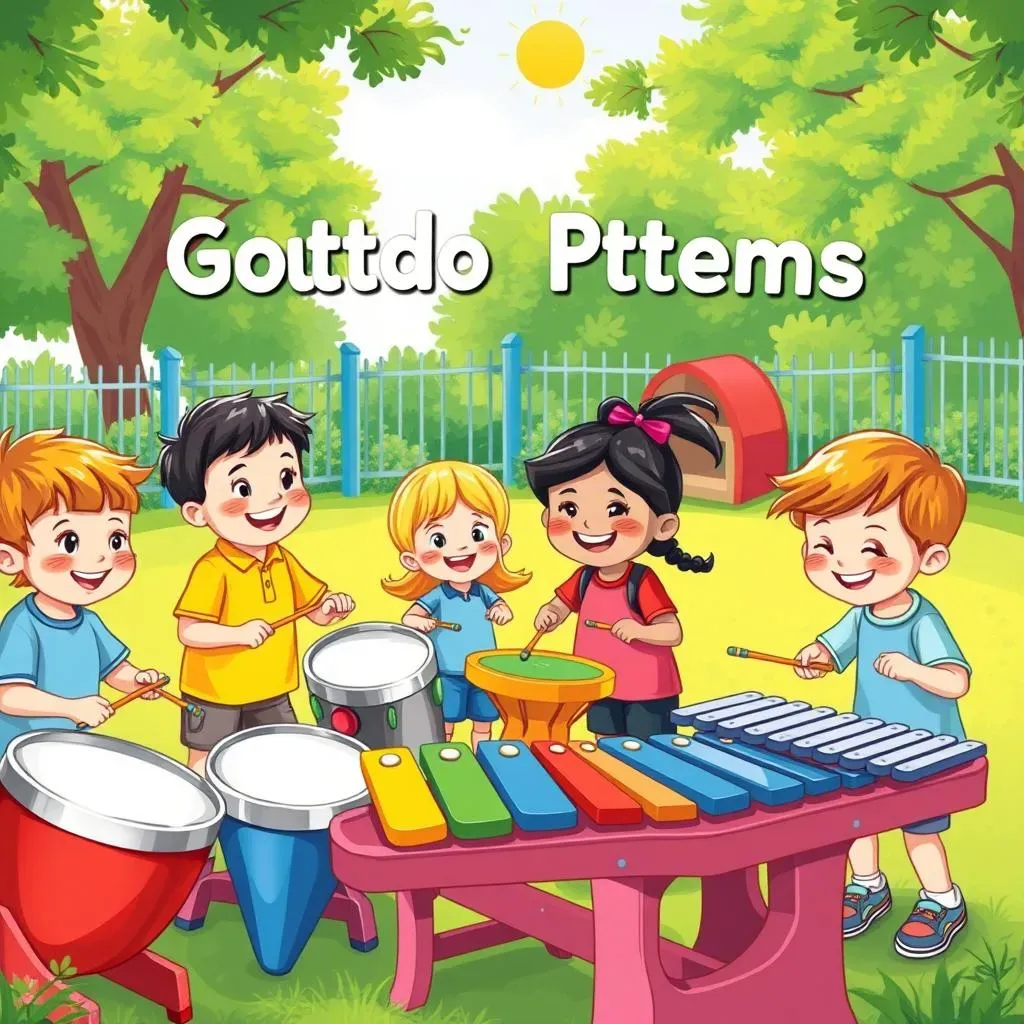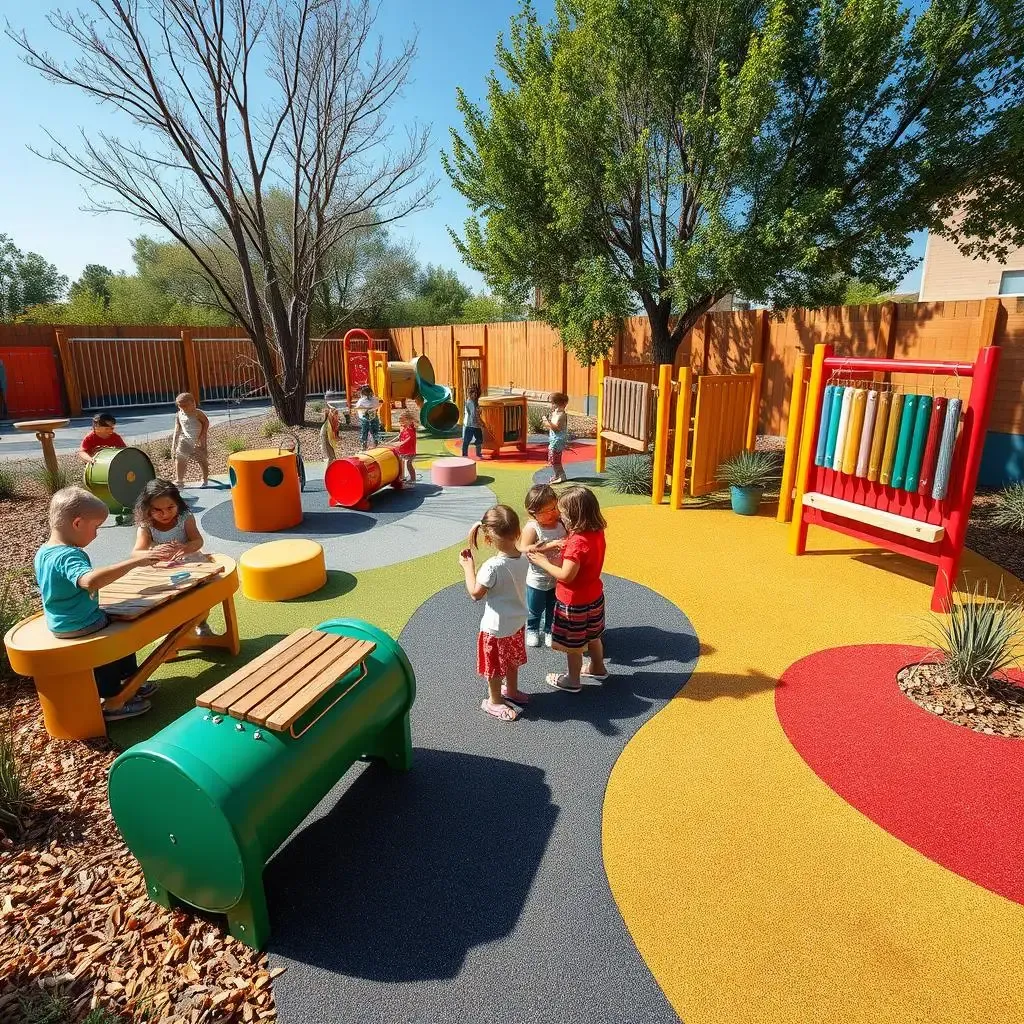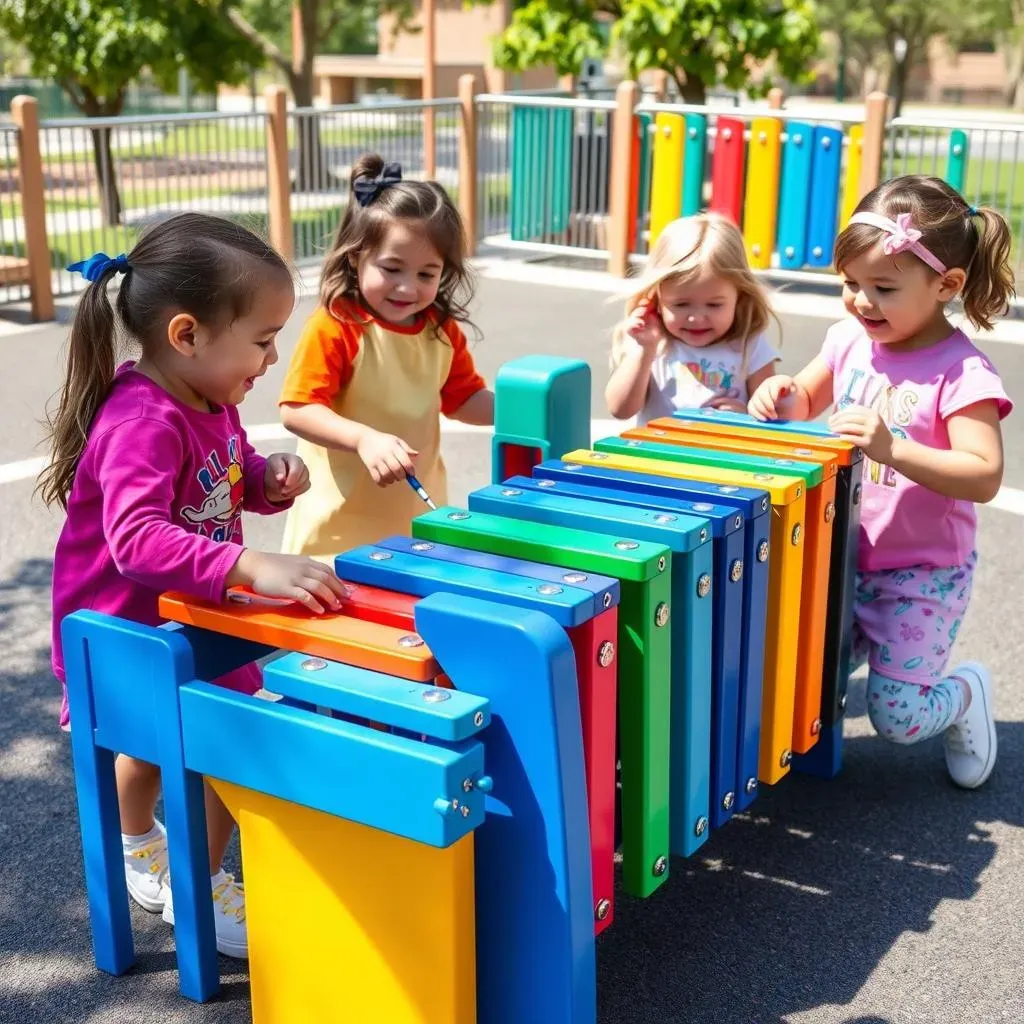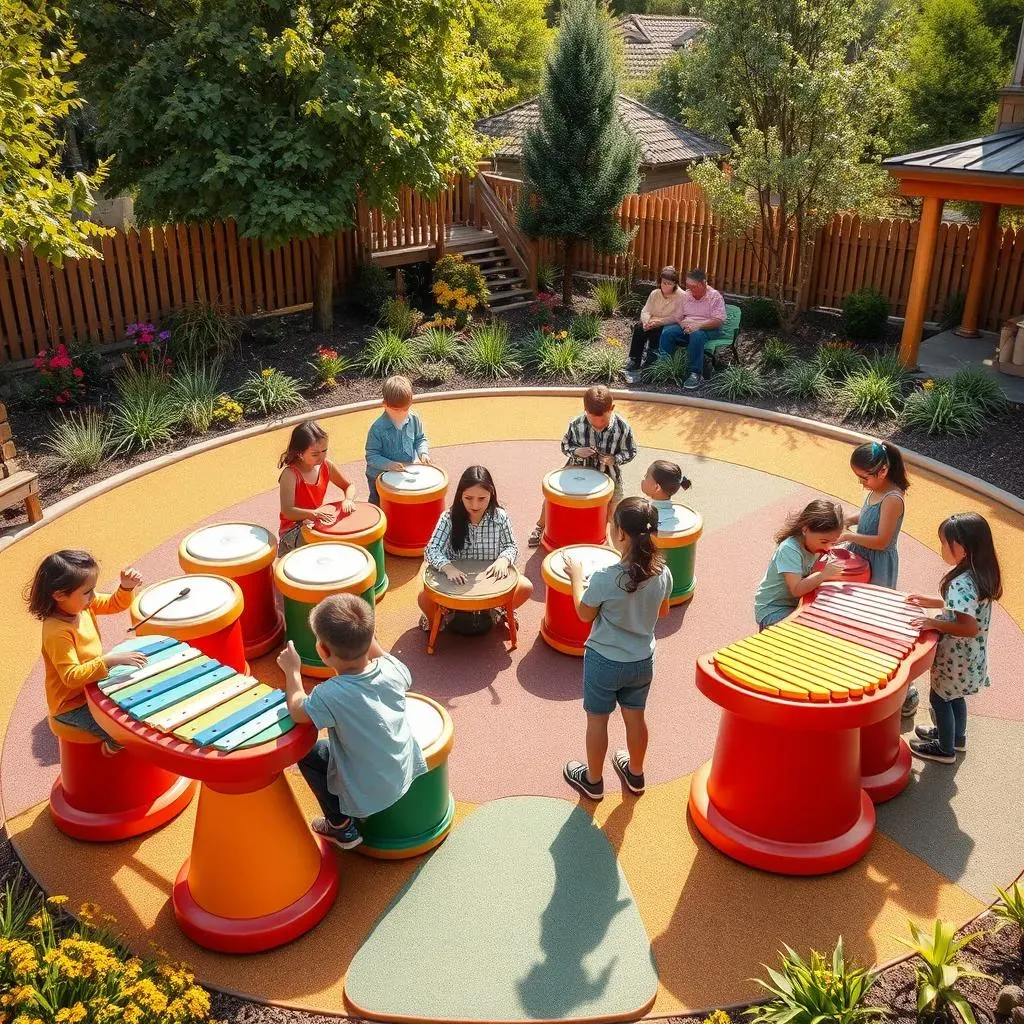Table of Contents
Imagine a playground filled with laughter and the joyful sounds of music. Not just any playground, but one where children can explore their creativity and develop a love for music through play. That's the magic of outdoor music playground equipment. It's more than just instruments; it's an invitation to create, collaborate, and connect with others in a fun and engaging way. Whether you're an educator, a park planner, or simply a parent looking to enrich your child's playtime, this guide will walk you through everything you need to know about bringing the gift of music to the great outdoors. We'll explore the benefits of incorporating musical elements into play areas, dive into the different types of instruments available, offer tips on designing an inclusive and stimulating space, and provide guidance on selecting durable and safe equipment. So, let's strike a chord and discover how outdoor music playground equipment can transform any space into a harmonious haven for children of all ages and abilities. Get ready to create a symphony of smiles!
Why Invest in Outdoor Music Playground Equipment?

Why Invest in Outdoor Music Playground Equipment?
Enhancing Development Through Play
Ever notice how kids are naturally drawn to making noise? Banging on pots and pans, drumming on tables – it's all part of their exploration of the world. Outdoor music playground equipment takes this innate curiosity and channels it into a constructive and developmental activity. These instruments aren't just toys; they're tools that foster creativity, improve coordination, and boost cognitive skills.
Think about it: playing a xylophone requires hand-eye coordination, understanding rhythm, and recognizing different tones. A set of drums encourages gross motor skills and provides a healthy outlet for energy. And when kids play together on these instruments, they learn valuable social skills like cooperation, communication, and teamwork.
Creating Inclusive and Accessible Play Spaces
One of the most compelling reasons to invest in outdoor music playground equipment is its ability to create inclusive play spaces. Music transcends language barriers and physical limitations, making it an activity that everyone can enjoy. Instruments designed for outdoor use are often built with accessibility in mind, allowing children of all abilities to participate.
Imagine a child in a wheelchair being able to play alongside their peers on a large, accessible drum. Or a child with autism finding a calming and sensory-rich experience with a set of chimes. Outdoor music areas provide opportunities for children to connect with each other, fostering empathy, understanding, and a sense of belonging. It's about creating a space where everyone feels welcome and can express themselves freely.
Types of Outdoor Musical Instruments for Playgrounds

Types of Outdoor Musical Instruments for Playgrounds
Percussion Power: Drums and Xylophones
When you think of musical instruments, percussion is probably one of the first things that comes to mind. And for good reason! Drums and xylophones are fantastic additions to any outdoor music playground. They're engaging, versatile, and can be played by individuals or groups.
Outdoor drums come in various sizes and shapes, from single drums to full drum sets. Xylophones offer a melodic element, allowing kids to create tunes and experiment with different notes. These instruments are usually constructed from durable materials like metal or recycled plastic, ensuring they can withstand the elements and the enthusiastic playing of children.
Quick Tip: Look for instruments with padded mallets to reduce noise and prevent damage!
Melodic Magic: Chimes and Metallophones
If you're looking to add a touch of harmony and melody to your outdoor music area, chimes and metallophones are excellent choices. These instruments produce beautiful, resonant sounds that can be both calming and stimulating.
Chimes often consist of metal tubes or bars suspended from a frame, creating a soothing tinkling sound when struck. Metallophones are similar to xylophones but use metal bars instead of wooden ones, producing a brighter, more sustained tone. Both types of instruments are relatively easy to play, making them accessible to children of all ages and musical abilities.
Imagine a gentle breeze causing the chimes to ring softly, creating a peaceful and enchanting atmosphere in the playground. It's a wonderful way to introduce children to the beauty of music and sound.
Instrument Type | Description | Benefits |
|---|---|---|
Drums | Various sizes and materials, producing rhythmic sounds. | Develops gross motor skills, coordination, and rhythm. |
Xylophones | Wooden or synthetic bars that produce different notes when struck. | Enhances hand-eye coordination, musical awareness, and creativity. |
Chimes | Metal tubes or bars that create soothing, resonant sounds. | Provides sensory stimulation, promotes relaxation, and encourages musical exploration. |
Metallophones | Metal bars similar to a xylophone, producing brighter tones. | Similar benefits to xylophones with a different tonal quality. |
Creative Combinations: Instrument Panels and Ensemble Pieces
For a truly immersive musical experience, consider incorporating instrument panels and ensemble pieces into your outdoor music playground. These interactive installations often combine multiple instruments or sound-making elements into a single unit, encouraging collaborative play and exploration.
Instrument panels can feature a variety of percussive and melodic elements, such as drums, xylophones, bells, and chimes. Ensemble pieces might include large-scale structures with multiple playing stations, allowing several children to create music together simultaneously. These installations not only provide a wide range of sonic possibilities but also foster social interaction and teamwork.
Real Life Example: I saw a group of kids create a band by playing a outdoor music playground equipment together, and they were all laughing and having a blast.
Designing an Engaging Outdoor Music Play Area

Designing an Engaging Outdoor Music Play Area
Location, Location, Location: Optimizing Space and Sound
So, you've decided to bring music to the playground – awesome! But where do you even start? Location is key when designing an engaging outdoor music play area. You want a spot that's accessible, safe, and acoustically suitable. Consider factors like sunlight, shade, and proximity to other play areas or buildings.
Think about the sound. Music is great, but you don't want to create a noise nuisance for nearby residents or classrooms. Orient the music area away from sensitive areas, and consider using natural barriers like trees or shrubs to help absorb sound. Also, ensure the area is relatively flat and well-drained to prevent water damage to the instruments.
Pro Tip: Visit the planned location at different times of day to assess noise levels and sun exposure.
Creating Zones: Balancing Active and Passive Play
An engaging outdoor music play area isn't just about cramming in as many instruments as possible. It's about creating a balanced environment that caters to different play styles and needs. Think about dividing the area into zones – active and passive.
The active zone might feature drums, xylophones, and ensemble pieces that encourage energetic play and collaboration. The passive zone could include chimes, metallophones, and other instruments that promote relaxation and sensory exploration. By creating distinct zones, you allow children to choose the type of musical experience they're seeking, fostering a more inclusive and enjoyable environment for everyone.
Also consider adding seating areas where children can rest, listen, and observe. Benches, picnic tables, or even natural elements like logs or rocks can provide comfortable spaces for relaxation and socialization.
Sensory Integration: Engaging Multiple Senses
To truly create an engaging outdoor music play area, think beyond just sound. Incorporate elements that stimulate other senses, creating a rich and multi-sensory experience for children. Consider adding colorful landscaping, textured surfaces, and aromatic plants.
Use different types of materials for pathways and play surfaces, such as wood chips, sand, or rubberized surfacing. These textures provide tactile stimulation and can also help to define different zones within the play area. Plant fragrant herbs like lavender or rosemary to add an olfactory element to the experience.
The goal is to create a space that is not only musically stimulating but also visually appealing, tactilely engaging, and even aromatically pleasing. By appealing to multiple senses, you can create a truly immersive and memorable play experience for children of all abilities.
Sensory Element | Examples | Benefits |
|---|---|---|
Visual | Colorful instruments, landscaping, and artwork. | Stimulates visual perception and creativity. |
Auditory | Drums, chimes, xylophones, and other musical instruments. | Develops auditory skills and musical appreciation. |
Tactile | Textured surfaces, different materials, and sensory panels. | Provides tactile stimulation and enhances sensory integration. |
Olfactory | Fragrant herbs, flowers, and essential oil diffusers (if appropriate). | Creates a calming and pleasant atmosphere. |
Selecting Durable and Safe Outdoor Music Playground Equipment

Selecting Durable and Safe Outdoor Music Playground Equipment
Material Matters: Weather Resistance and Longevity
so you're ready to invest in some awesome outdoor music playground equipment. But before you get too excited by the shiny instruments, let's talk about durability and safety. These instruments are going to be exposed to the elements – sun, rain, snow, and everything in between – not to mention the enthusiastic (and sometimes rough) handling of children. That's why material selection is absolutely crucial.
Look for instruments constructed from weather-resistant materials like powder-coated metal, recycled plastic, or treated wood. These materials can withstand the elements without rusting, warping, or deteriorating. Avoid instruments made from cheap plastics or untreated wood, as they're likely to crack, fade, or rot over time. Also, make sure any metal components are rust-proof and any wood is treated with a non-toxic sealant.
Safety First: Meeting Standards and Preventing Injuries
Beyond durability, safety is paramount when selecting outdoor music playground equipment. Ensure that all instruments meet relevant safety standards and regulations, such as those set by the ASTM (American Society for Testing and Materials) or the EN (European Norm) standards. These standards cover everything from material safety to structural integrity to fall height requirements.
Check for potential hazards like sharp edges, pinch points, or protruding hardware. Instruments should be designed with smooth surfaces and rounded edges to minimize the risk of cuts or scrapes. Make sure all fasteners are securely tightened and recessed to prevent them from snagging clothing or causing injury. Also, consider the fall height of the equipment and install appropriate surfacing materials, such as rubberized mulch or poured-in-place rubber, to cushion falls.
Real Life Example: I was at a playground last week, and I saw a child trip and fall near a set of drums. Luckily, the playground had soft rubber surfacing, and the child was unharmed.
Maintenance Matters: Ensuring Long-Term Performance
Even the most durable and well-designed outdoor music playground equipment requires regular maintenance to ensure long-term performance and safety. Develop a maintenance schedule that includes routine inspections, cleaning, and repairs.
Inspect instruments regularly for signs of wear and tear, such as cracks, loose fasteners, or damaged components. Clean instruments regularly with a mild soap and water solution to remove dirt, grime, and debris. Lubricate moving parts as needed to prevent them from seizing or rusting. And promptly repair or replace any damaged components to prevent further deterioration or potential hazards.
Pro Tip: Keep a log of all maintenance activities, including dates, descriptions of work performed, and any issues identified. This will help you track the condition of your equipment and identify any recurring problems.
Maintenance Task | Frequency | Description |
|---|---|---|
Inspection | Weekly | Check for loose fasteners, sharp edges, and signs of damage. |
Cleaning | Monthly | Wash instruments with mild soap and water. |
Lubrication | Quarterly | Lubricate moving parts to prevent seizing. |
Repairs | As needed | Repair or replace damaged components promptly. |
Case Studies: Inspiring Outdoor Music Playground Projects

Case Studies: Inspiring Outdoor Music Playground Projects
Harmony Park: A Symphony of Inclusion
Let's kick things off with Harmony Park, a project that truly embodies the spirit of inclusive play. Located in a bustling urban park, Harmony Park was designed to be accessible to children of all abilities, with a particular focus on those with sensory processing disorders. The park features a wide range of outdoor musical instruments, including accessible drums, chimes, and xylophones, all arranged in a circular layout to encourage social interaction.
But what really sets Harmony Park apart is its thoughtful attention to sensory integration. The park incorporates colorful landscaping, textured surfaces, and even aromatic plants to create a multi-sensory experience that is both calming and stimulating. The result is a space where children of all abilities can come together to create music, connect with nature, and express themselves freely.
Rhythm Garden: Cultivating Creativity in Schools
Next up is Rhythm Garden, an inspiring project that transformed a neglected schoolyard into a vibrant outdoor music classroom. The school partnered with local artists and musicians to design a space that would not only provide opportunities for musical exploration but also promote environmental awareness.
Rhythm Garden features a variety of homemade and repurposed instruments, such as recycled metal drums, bamboo chimes, and even a water xylophone. The garden also includes raised garden beds where students can grow herbs and vegetables, connecting their musical activities with nature and sustainable living. The project has not only enhanced the school's music program but has also fostered a sense of community and environmental stewardship among students and staff.
Project Name | Location | Key Features | Impact |
|---|---|---|---|
Harmony Park | Urban Park | Accessible instruments, sensory integration elements. | Inclusive play, sensory stimulation. |
Rhythm Garden | Schoolyard | Repurposed instruments, garden beds. | Musical exploration, environmental awareness. |
Harmonizing Play and Learning with Outdoor Music
As we've explored, outdoor music playground equipment offers a unique and enriching way to enhance play spaces. From fostering creativity and collaboration to promoting physical activity and sensory development, the benefits are undeniable. By carefully considering the types of instruments, design principles, safety standards, and real-world examples discussed, you can create an inclusive and engaging environment where children of all ages and abilities can discover the joy of music. So, go ahead, unleash the sound and transform your playground into a vibrant symphony of play and learning. Remember, it's not just about the music; it's about the memories created and the connections forged in a space where imagination knows no bounds.